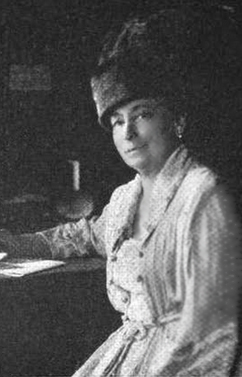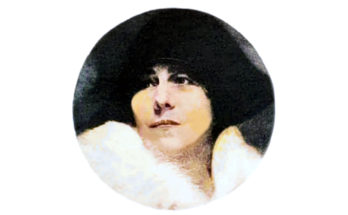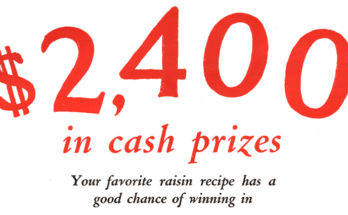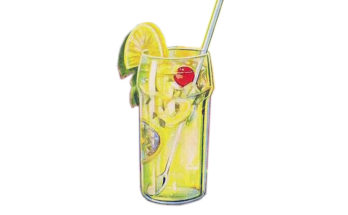
See inside the Knox booklet [Reddit link] for a pretty cake, French Dainties, and even an attractive Corned Tongue in Aspic.
Charles Knox started the Knox Gelatine company in 1891, yet died before it rose to its great success. Speaking of Rose…
Mrs. Rose Knox, Charles’s wife, inherited the Knox business in 1908. She was born Helen Rosetta “Rose” Markward in 1857 in Ohio, daughter of a chemist. Her husband Charles Knox was born in Canajoharie, New York in 1855. They had four children, and the oldest son James worked at the company with Rose beginning in 1913, and headed the company after she retired at 90 years old. Here’s a link to the official Knox company history.
Upon inheriting management of Knox Gelatine, Rose Knox created a test kitchen and implemented advertising via cooking booklets, recipes on packages, etc. In her kitchen she developed gelatin recipes and spent $500,000 in research. She intentionally geared the product for economy in families. When many businesses struggled during the Depression, Knox gelatin thrived, expanding into four new plants. Collier’s magazine called Rose Knox “America’s foremost female industrialist.”
After the test kitchen was well-established, Rose designed her home kitchen. In 1920 The Green Magazine reported the look of her model kitchen, “...the famous white coal bin…white-tiled from top to toe; white cupboards, cork-tiled floor with a drain in it so it can be washed with the hose; white-topped tables which have water piped to them to save steps.”
She was the first female member of the American Grocery Manufacturers’ Association and became its first female director in 1929.
Knox’s main competitor was Jell-o, whose pre-colored and pre-flavored the gelatins were often confused with Knox. On advertisements from both companies they’d have words similar to “jello is not to be confused with unflavored gelatin” and “Knox Gelatine is not to be confused with pre-flavored gelatin.” Because Rose Knox knew how easy it was to flavor gelatin at home with fruit juices, Rose Knox resisted additions of colors and flavors until 1935. An exception was an earlier product, Acidulated Gelatine which had a lemon packet enclosed.
Three recipes in the above booklet have Acidulated Gelatine–What was it exactly? In the 2020s it means gelatine derived from pig skin. –But Knox had a cow as a logo, and in fact the gelatin was made from calves. Knox’s acidulate gelatine had the lemon flavor packet, which added to the acidity. They mentioned in the booklet that the regular and acidulated gelatine were the same — and that acidulated gelatine just had a separate flavor package.
The other type of Knox gelatine mentioned was Sparkling which is not available anymore. — what was it? It’s gelatin with sparkling soda, here’s a recipe.
The company mentioned that their Sparkling Gelatine was endorsed by the leading Pure Food Experts. Tip of the hat to Anne Pierce, who played a role in the 1906 Pure Foods Act.
And also “used daily…by domestic science teachers and teachers of cookery in the foremost cooking schools… ” No doubt — Here, Fannie Merritt Farmer earlier endorsed Knox Sparkling Gelatine, and where she went at the turn-of-the-century, the country followed.
Yes, the company spelled Gelatin with an e at the end. Why, I’m not quite sure. It is the way they spell it in England.
And what people are doing with gelatin now? Fun demo on youtube!



